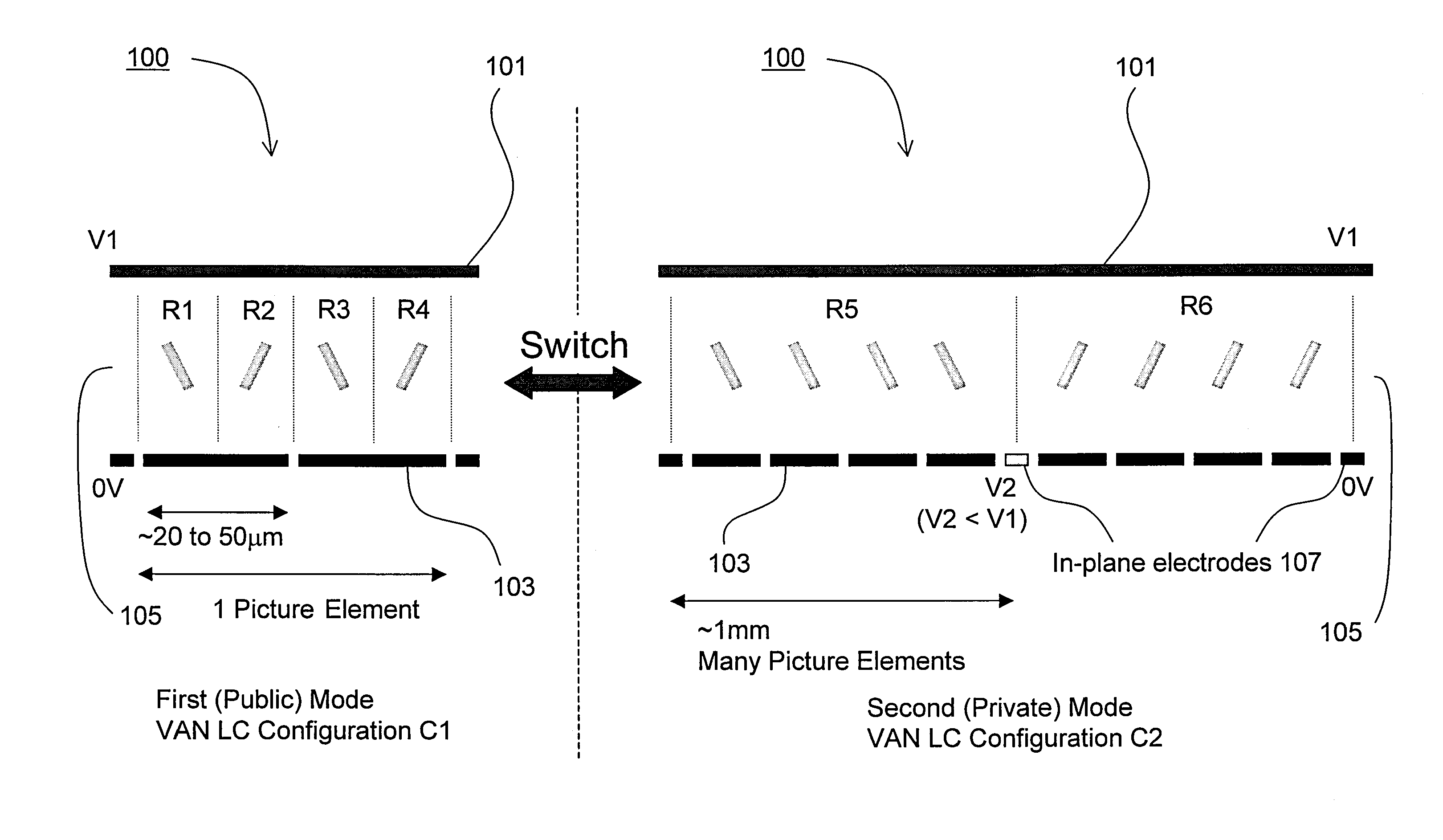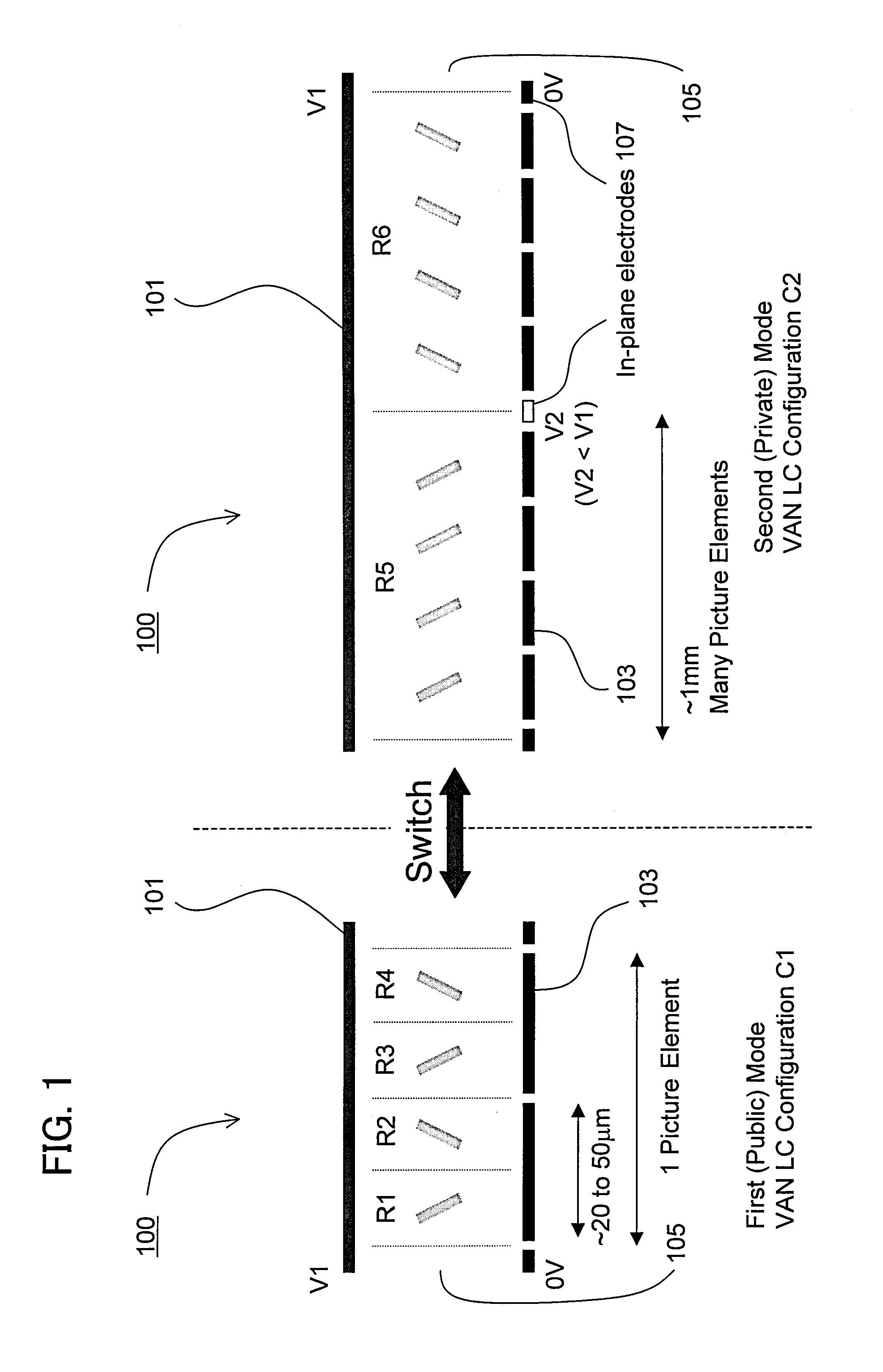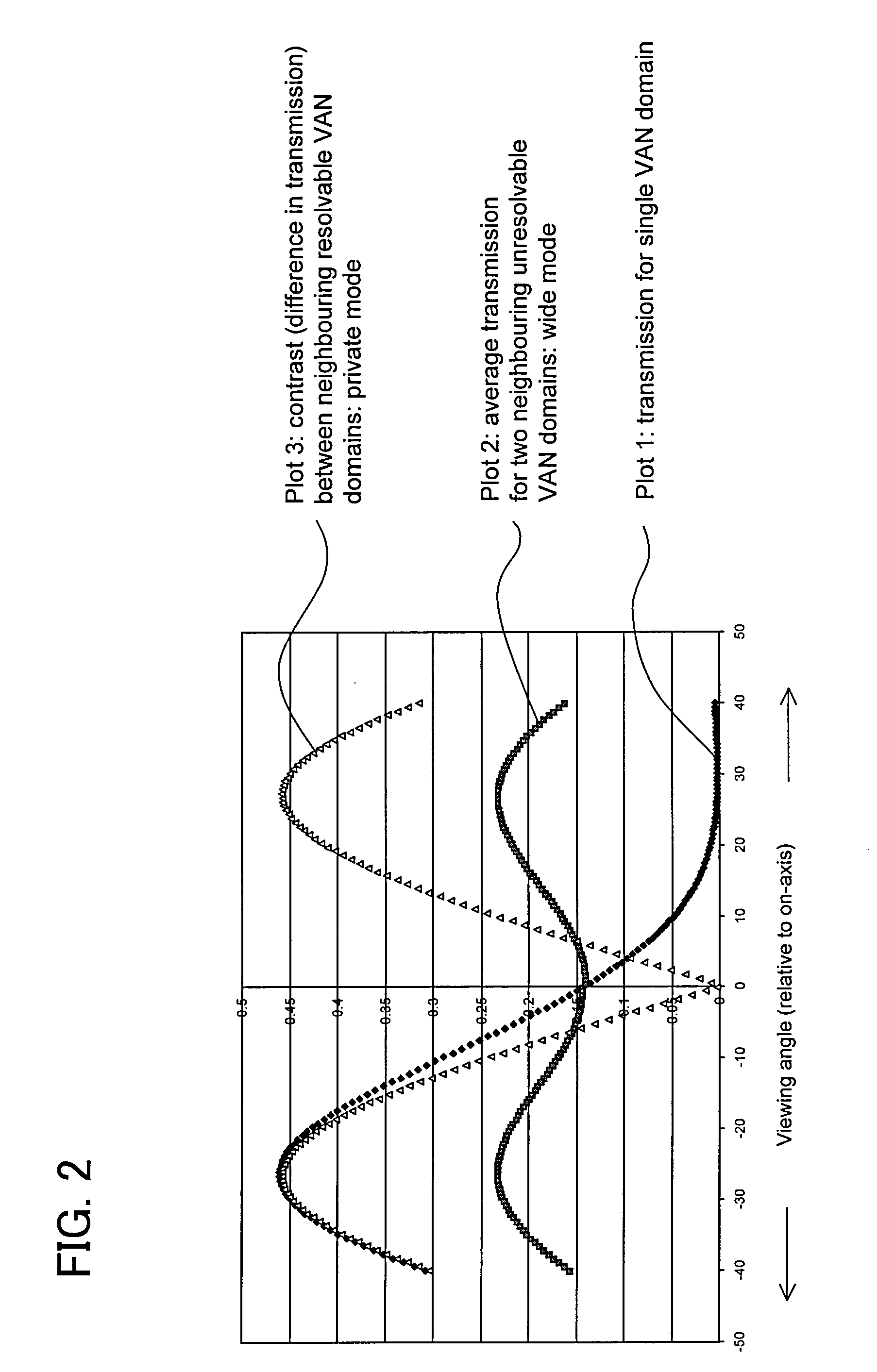Display device and liquid crystal display panel
a technology of liquid crystal display panel and display device, which is applied in the direction of static indicating device, optics, instruments, etc., can solve the problems of moving parts, unable to control who else may be watching, and giving a method by which the privacy function can be easily achieved
- Summary
- Abstract
- Description
- Claims
- Application Information
AI Technical Summary
Benefits of technology
Problems solved by technology
Method used
Image
Examples
first embodiment
[0163]FIG. 1 illustrates a display device incorporating a liquid crystal display panel 100 according to the present invention. The liquid crystal display panel 100 displays an image by spatial light modulation, using opposed electrodes 101 and 103 disposed across a layer of liquid crystal material 105. The electrode 103 is segmented so as to enable switching of the liquid crystal into two or more different orientations within a single picture element. Within a single picture element the same voltage is applied to all areas of the segmented electrode 103. Preferably several regions of the two or more different orientations are formed within a single picture element. Switching into the different orientations is controlled by the fringing electric fields produced at the edges of the segmented electrode 103. Alternatively other methods of producing fringing electric fields, such as protrusions on the electrode surface, may be used.
[0164]As explained in more detail below, the liquid crys...
second embodiment
[0178]the present invention, also making use of an in-panel liquid crystal switching technique to achieve switching between a public and private mode, will now be described with reference to FIGS. 3 to 12.
[0179]FIG. 3 is a block diagram illustrating an image display system 1 for use in explaining a second embodiment of the present invention. The image display system 1 comprises an image processor 10, a display controller 20 and a display device 30. The display device comprises a display panel 32 and a non-linear component 34. A liquid crystal display panel 200 according to the second embodiment is illustrated in FIG. 4, and is intended to replace the display panel 32 and a non-linear component 34 of FIG. 3, as will be described below. Referring to FIG. 3, an original image I is to be displayed on the display panel 32 of the display device 30. The original image I is represented by a plurality of image elements, which may correspond to pixels of the display panel 32 or sub-pixels of ...
fourth embodiment
[0225]A fourth embodiment will be described with reference to FIGS. 14(A) to 17. In this embodiment, switchable privacy is achieved using an LC mode which has two voltage ranges, denoted in FIGS. 14(A) and 14(B) as ranges A and B, with similar greyscale variation on axis but a single voltage range, denoted as A in FIGS. 14(A) and 14(B), with normal greyscale variation off axis. In the public mode, the voltage range A having normal greyscale variation both on axis (FIG. 14(A)) and off axis (FIG. 14(B)) is used and good image quality is seen at all viewing angles. In the private mode, some of the pixels achieve the desired greyscale on axis (FIG. 14(A)) using the first voltage range A and other pixels achieve the same greyscale on axis (FIG. 14(A)) using the second voltage range B. Pixels that use the first voltage range A will appear normal both on and off axis (see pixels in the example image on the right-hand side of FIGS. 14(A) and 14(B) respectively that are linked by an arrow to...
PUM
 Login to View More
Login to View More Abstract
Description
Claims
Application Information
 Login to View More
Login to View More - R&D
- Intellectual Property
- Life Sciences
- Materials
- Tech Scout
- Unparalleled Data Quality
- Higher Quality Content
- 60% Fewer Hallucinations
Browse by: Latest US Patents, China's latest patents, Technical Efficacy Thesaurus, Application Domain, Technology Topic, Popular Technical Reports.
© 2025 PatSnap. All rights reserved.Legal|Privacy policy|Modern Slavery Act Transparency Statement|Sitemap|About US| Contact US: help@patsnap.com



